
I do believe that in the previous official post, I promised a discussion about winter festivals. With the 2018 having now officially started for most, I must remind you that for many, it still hasn’t… or that it’s not even 2018. Calendars are different for many cultures, and that’s not so new… in 18th century, for instance, England was so off the usual calendar that it had to leave out an entire 11 days in the year 1752 to catch up with the rest of Europe… (cf. Calendar (New Style) Act 1750) an important feat if you were going to get those ships to the port at the actually decided time, rather than whenever, because trade doesn’t work that way. Today, even all European calendars aren’t completely the same… but to discuss this, and to discuss winter festivals, we must first consider two things.
What is time passage? And what is winter?
If you are wondering whether or not I am still recovering from the previous night’s celebration, think again. Obvious questions often really aren’t; and the answers we give -we are trained to give – are generally consistent only within our specific cultural/social/religious/era space, and start to fall apart the moment one or more of these factors is even slightly changed… including by taking a walk down the history lane, even in our own back yard.
Time can be divided into two perception categories – the SCR time (so the time/space perception of our society, culture and/or religion, consistent generally with the creation of aura of factuality and the specific of the here and now) and the actual time, which can be divided in the rough categories of day and night (with them being further dividable into dusk, dawn, dimming -i.e. getting dark but not dusk yet -, noon, midnight etc, if those phenomena are observed in realistic relation to the actual geoposition re space bodies, so moon and sun) and times of year. Times of year especially get complicated, as seasons don’t always have a clear separating line even in the temperate zone, and seasons themselves can differ… we know mild winters and Indian summers, hot and cold autumns and springs, and throughout history, the environment kept changing and shifting and accordingly, so did the harvest and the human perception of which months, for instance, belong to summer or spring especially.

The environmental time, so actual time, often correlates to the SCR time perceptions loosely and even poorly; a good example is the summer savings time, which has been proven to be way less than effective, is not observed by all countries and not in the same way, actually lessens productivity and brings with it a host of psycho-physical harm factors. Its inception comes from religious fervour turned social, and despite the fact that we all know that it’s bad for us, we are still hesitant to remove it (i.e. mess with the aura of factuality, the notion of “we do this, this is who we are, this is our identity as a part of society, as society itself”), in spite the debates dragging on year after year. It hasn’t even been around that long, and yet, it is anchored in the feeling of social existence and therefore nigh untouchable… much like many other bad habits and ideas.
As I mentioned previously, the calendrical time (focused more on the passage of seasons than the actual day and night) deals primarily with the SCR structure and is poorly connected with the actual time/space environment. Pratchett makes a joke about the randomised natural and other disasters predicted in almanacs (the old calendars that had, among other things, on them advice on how and when to plant etc… provided one could read and read well, actually mark the passage of time properly and the ideas actually applied to their particular space, as environment covered by the almanac makers would often be largely different from one end of the country to the next, and that’s just the start of the problems), and he is quite correct. Having spoken to people who have still used almanacs in their day, I can say that majority were there to fuel superstition and had little to do with actual challenges of the environment.
This doesn’t mean that people once were actually stupid; but it does mean – and you can observe that yourself with people around you – that rigid approach breeds a certain type of stupefying lack of observation. If a year is bad and crops freeze, little is achieved by people “finding” and burning a witch; prayers won’t save a sick cow, but knowledge of herbs might; and comprehension of environmental patterns is slowly lost (and those not fitting to that behaviour silenced) when there is a proscribed dogma for how to perceive them (and often, who to blame them on).
You have to take all this into account when considering time and seasons and how humans work them into their lives, or work around them to achieve a specific status quo.
Environment can change drastically very unpredictably, and that within a lifetime. But the tendency to rigidity will see these changes either incorporated without leaving a trace of change (apart from the palaeorecord) or will simply deny them happening and carry on as if nothing has happened. For a farming society especially, the consequences especially of the latter can be disastrous, as failure to observe and adapt may lead to repeated failure with crops, which in turn will mean famine, spread of disease in a society with an immune system already weakened from starving and ultimately death, accompanied all too often by psychological deterioration and violent outbursts within the group when tempers are short, people at the end of their tether and suspicion and paranoia fuelled by the idea that there must be a culprit somewhere. And yet that “culprit” can simply be an earthquake, a volcano, a set of dry winters and summers, a shift in winds due to a larger environmental change somewhere quite far, even the axis tilt shifting. These are all matters that are still largely out of our hands, that we cannot control… imagine the tragedy of making the bad situation even worse by bringing in structured hate and paranoid suspicion. Imagine the outcome of this type of witch hunt.
This danger is very real; currently, many governments consist of bodies or individuals pointing fingers at a convenient Other to solve problems that can never be solved that way. Religious groups seek dominance by doing the same. Sometimes, the two work in cohesion, pitting people against each other.
And many still fall for it because of the rigidity of the behavioural patterns they have been taught to follow.
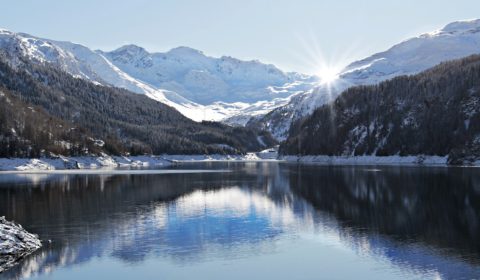
This, I hope, covers a little bit about time and seasons. So what is winter?
For most part, people understand winter as a season of cold, with little growth and with the possibility of snow, with the associated time/season shifts of both actual and especially SCR variety.
And yet, this is a fallacy in itself. Socially, it is definitely winter in Hawaii; Christmas is celebrated (I do believe the term for Merry Christmas is Mele Kalikimaka) and ornaments are put on trees, but look as you might, most of the islands will never see snow; the generally tropical environment does not allow for it (except on the top of the highest mountains), much like you are unlikely to see the type of heat the summer produces there in an Alpine valley.
Not always – I have been to a small village near the Danube river in Austria, and the region is not merely much warmer than the rest of the neighbouring land, but so warm and hospitable that it even has vineyards, and generally seems more like someone transplanted Mediterranean into the Alps.
But as a generality, certain spaces are better at following the social divide between seasons than others are. Same is of course true of time – in the North of Scotland, the time is not different than in the rest of the UK, but the divide between day and night is nearly Nordic.
And in tropical and subtropical climes, the passage of seasons is a division between wet and dry, which has very little to do with the actual perception of winter… and yet we often still say winter when we speak of those months of monsoon.

Winter is, therefore, at least socially, largely a construction of expectations based on a settled calendrical date, rather than fully and ultimately an actual season. And it is our social perception that actually marks the passage of the year, not so much the way seasons shift naturally.
Socially, winter is a symbol of ending and renewal primarily. Ending and renewal not so much of the year that has just passed and the new one that is just starting, but of the society, culture and the associated religion in question as a constructed group. Autumn festivals (for instance Divali Mela, modern Pagan Samhain or Halloween) mark the precursors to that event, often reminding the social group of their perceived importance and origins. The winter festivals at their crudest then continue this journey into the obligatory feeling of endangerment, usually from external demonic forces. Chasing winter – and those forces, often strongly associated with it – away is therefore an act of renewing one’s externally endangered society, the self within the group of similar selves. Noise, fire and even potentially violent behaviour can be included in any of these events, which may take time over several festivals dotted around the winter months; the Chinese New Year, full of fireworks, firecrackers, general noise and parading dragons, the Korent or Kurent in Slovenian and Austrian regions, are just some of the examples of how winter is chased away. Given that the winter time (including the tropical winter) is often physically and psychologically taxing and unpleasant, it is not difficult to see why it is so easy to keep the patterns going. When people are already strained by actual environment, when they have been told their whole life that they will be, when tension feeds tension, the consequences are easily predictable and behaviour easily funnelled into a specific direction.
So which are the most interesting winter festivals you should see?
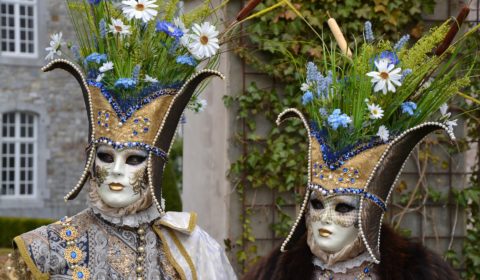
There’s probably no festival out there better known than the Carnivale in Venice. Immortalised in the 2005 film Casanova for the popular viewer, il Carnevale goes back centuries right to the medieval era when carnivals probably joined pre-Christian demon-chasing festivities with the time of abandon before the ascetic period of Lent. It must be said here that il Carnevale has somewhat changed its appearance even though many old mask types are still used today and have become a part of Venetian cultural heritage.
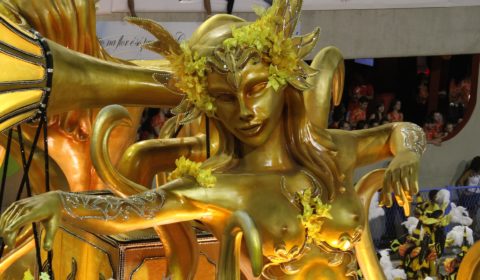
Rio de Janeiro hosts one of the world’s biggest carnivals around a similar time every year. A spectacle of dancing, music and performance, the first festival dates back to the 18th century and its popularity rises from year to year.

In New Orleans, Mardi Gras is another well-known festival that attracts tourists from all over the world to the vibrant community of this charming Southern city. Fun fact – on the day of Mardi Gras, gentlemen carry strings of beads that the ladies are supposed to try to acquire in their competition for the most popular girl. A trusted and expected old trick to get a bead necklace is to flash your bust, including in public, even if you are wearing nothing under…
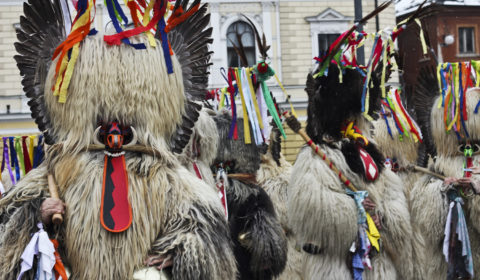
The Kurent (or Korent) run is an old Slovene tradition, also found in some parts of Austria, where young men wearing monster masks and entire costumes chase through the streets and after people. Historically, this festival has been associated with a lot of inter-personal violence and crime and due to personal or inter-village issues and the relative obscurity of the identity of the otherwise armed Kurents.

A festival you may not be able to witness because it’s supposed to happen privately is the festival of Pancha Ganapati, created in the 80s by a westerner turned Hindu. This is a syncretic festival joining both Christmas traditions and Hindu religion.
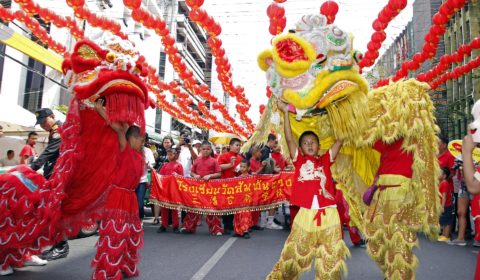
Chinese New Year varies greatly in how it is celebrated as China has many regions and many different peoples and Buddhism is observed in many other parts of the world including by immigrant Chinese groups. This is why the best way to have a Chinese New Year experience is to march down to your local Chinatown after having figured out when this year the Chinese New Year actually happens! (Hint: it’s the 16th February this year!)
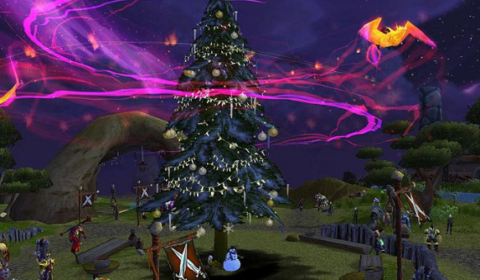
Meanwhile, in geekdom, the players of World Of Warcraft celebrate this online world’s special festival of winter referred as Feast of the Winter Veil. Whether or not this refers to the mists and fogs often experienced during winter is unclear, but it is a time of festivities during which a male deity-like figure roams the world as a quest-giver and decorations are abundant. Special objects and challenges are typical for this time of the year. This is definitely a festival you can participate in or observe and it just goes to show how much the online life mirrors the life in the physical world. It is also interesting to note that Greatfather Winter enjoins in his figure both the traditional perception of Father Christmas and similar personas as well as those of gods, demi-gods, wizards and mythical creatures from centuries past who appear in myth and tale as challenge- and quest-givers, thus encouraging the hero to prove themselves.
All Image sources – Pixabay
Except for the following –
Pancha Ganapati image – https://vegeyum.wordpress.com/food-for-hindu-festivals/pancha-ganapathi/
Kurents image – https://blog.nationalgeographic.org/2014/02/07/slovenias-winter-carnivale-draws-a-woolly-colorful-crowd/
World Of Warcraft image – https://www.pcgamesn.com/world-of-warcraft/winter-veil-2014-starts-today-in-world-of-warcraft
